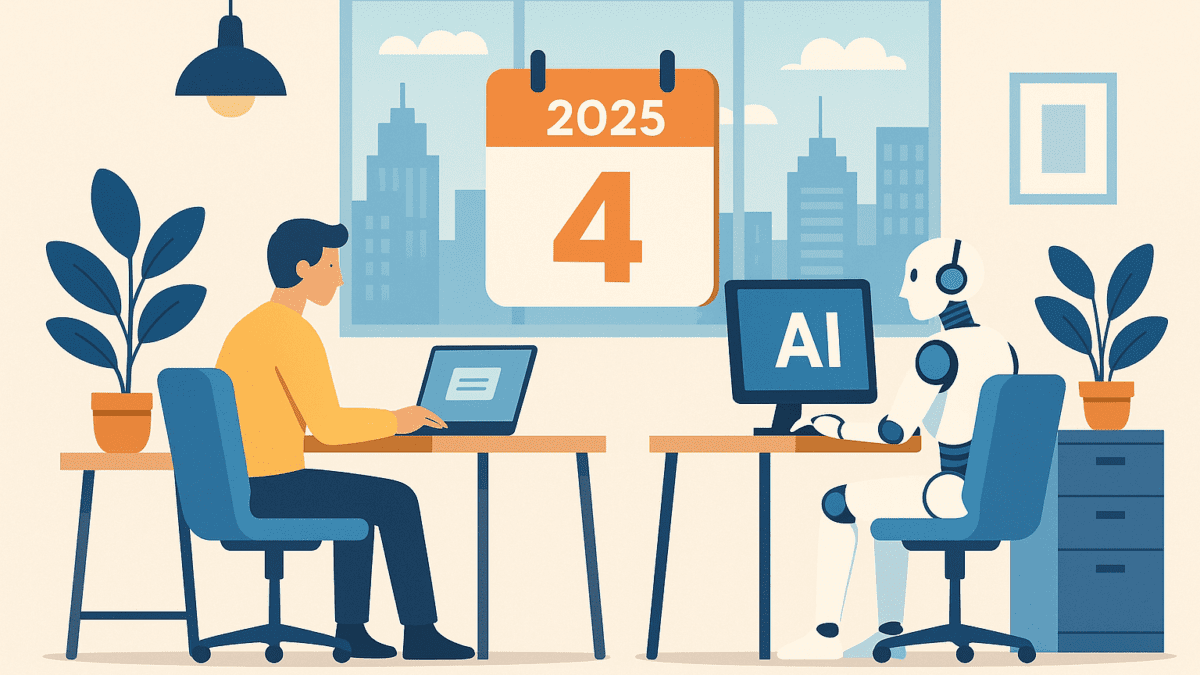The Future of Work in 2025: Will AI Make the 4-Day Week the New Normal?
The world of work is undergoing its biggest shift in decades. In 2025, AI, automation, and hybrid models are challenging the long-standing tradition of the 5-day workweek. Around the world, governments and companies are experimenting with shorter weeks—and many are asking: Will the 4-day workweek become the new normal?
With trials showing increased productivity and happier employees, the idea is gaining momentum. But it also raises critical questions about sustainability, equity, and the role of artificial intelligence in shaping our working lives.
Why the 4-Day Workweek Is Trending in 2025
Several factors have converged to make this moment possible:
- AI and Automation
Repetitive tasks—from scheduling to reporting—are increasingly automated by AI. This frees employees to focus on high-value, strategic work, reducing the need for long hours. - Employee Wellbeing
Post-pandemic, burnout and mental health challenges remain widespread. Companies are looking for ways to retain talent while prioritizing wellbeing. - Talent Competition
With Millennials and Gen Z making up the majority of the workforce, demand for flexibility and work-life balance is driving change. - Global Experiments
Trials in countries like Iceland, the UK, and Japan have shown measurable benefits, sparking wider adoption.
Benefits of the 4-Day Workweek
1. Higher Productivity
Data from UK pilots (2023–2024) showed companies maintained or even increased productivity after moving to shorter weeks. Employees focused on high-value tasks and cut time-wasting meetings.
2. Improved Wellbeing
Workers report lower stress levels, better mental health, and improved work-life balance. Happier employees often lead to better customer experiences.
3. Talent Attraction and Retention
Organizations offering a 4-day week stand out in competitive job markets, appealing to younger, flexibility-first workers.
4. Sustainability
Fewer commutes mean lower emissions. For companies aiming to meet ESG goals, shorter weeks are a win-win.
Challenges and Limitations
1. Industry Fit
The 4-day week works well in knowledge industries, but not in 24/7 sectors like healthcare, logistics, or retail.
2. Customer Expectations
In a global economy, clients expect round-the-clock availability. Closing for an extra day may not work in customer-facing roles.
3. Risk of Overwork
Without careful planning, a 4-day week may compress five days of work into four—leading to longer, more intense days instead of genuine rest.
4. Unequal Access
If only some industries or companies adopt it, workers in traditional models may feel left behind, widening gaps in workplace equity.
The Role of AI in Enabling Shorter Workweeks
AI is more than a productivity booster—it’s the backbone of making shorter weeks viable.
- Task Automation: AI tools handle routine admin, HR queries, and IT support.
- Workflow Optimization: Machine learning analyzes work patterns and identifies inefficiencies.
- Predictive Analytics: Companies use AI to forecast workloads and balance staffing needs.
- AI Assistants: From scheduling to content creation, generative AI reduces time spent on repetitive work.
In effect, AI acts as a time multiplier, enabling humans to achieve more in fewer hours.
Global Case Studies in 2025
- Iceland: National trials with reduced hours showed employees were healthier and productivity held steady.
- Microsoft Japan: Their experiment with a 4-day week boosted productivity by 40%.
- UK 4-Day Week Pilot: 92% of companies involved continued the policy after the trial, citing increased revenue and happier staff.
- US Startups: Many tech startups are offering 4-day weeks as a talent magnet, using AI to cover operational gaps.
Will the 4-Day Workweek Become the New Normal?
The 4-day week isn’t universally feasible—but it’s no longer fringe. Analysts predict:
- Hybrid Models: Companies may offer “4.5-day weeks” or rotating schedules instead of a uniform 4-day policy.
- Output Over Hours: Success will be measured by deliverables and impact, not clocked time.
- AI-First Workplaces: As AI matures, fewer hours will be needed to achieve the same results.
- Policy Shifts: Governments in Europe and Asia are already exploring legislative support for reduced-hour workweeks.
Conclusion
The future of work in 2025 is not about working less—it’s about working smarter. AI and automation are making shorter workweeks possible, while cultural shifts are pushing companies to rethink outdated schedules.
For some, the 4-day week is already here. For others, it will take time, adaptation, and industry-specific solutions. But one thing is clear: flexibility and balance are the new cornerstones of modern work.
You May Also Like: The SEO Advantage of Interactive Whitepapers in 2025





